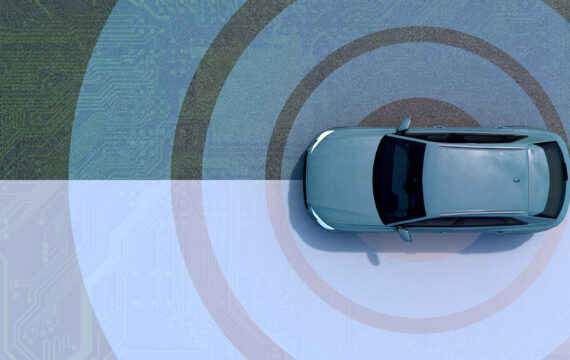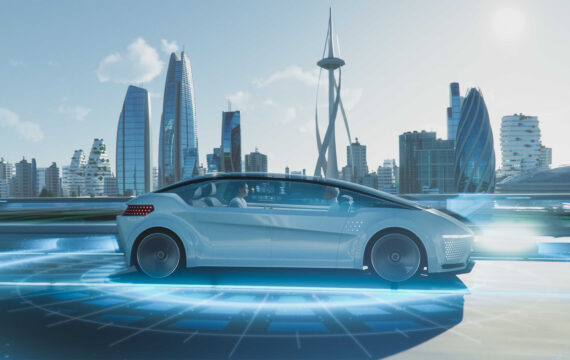What are you doing in your car? Just driving? That will soon be a thing of the past. In several years, you’ll be working, resting, ordering food, shopping, planning, and traveling in your smart, connected, autonomous car. And big data is what will make your vehicle, well, bigger than just a car. That’s when a connected car platform steps in.
As we head towards the day when every vehicle is connected, we should stop thinking of our cars only as a means of transportation and start thinking of them as computers. A connected car platform is what can create immersive user experiences of the future. But what does it encompass? How exactly does it use data? Who’s already building and using this technology?
Let’s find out more about connected car data infrastructure and connectivity platforms:
- What is a connected car platform?
- Connected car platforms: The companies and technologies behind them
- Data in a connected car platform: Where it comes from and how it’s used
- How companies use connected car platforms
- What are the challenges behind connected car platforms and how can you overcome them?
What is a connected car platform?
IDC predicts that connected car shipments will reach 76.3 million units by 2023, and big data is what will make vehicles both connected and smart. Without access to a steady and reliable stream of data from a connected car platform, your vehicle, while having “senses” thanks to various on-board devices, will be out of sync with reality. It won’t be connected. And while self-driving capabilities are not yet ready, connectivity is just about to enter the market.
The connected car market in the pre-COVID-19 situation was projected to reach USD 180.9 billion by 2025 from USD 63.2 billion in 2020 (in terms of value).
Cars can’t speak to each other directly; they need a hub or chat functionality to communicate. Vehicle connectivity platforms unite infotainment systems, automotive application frameworks, and connected car data infrastructure into one system. As a result, we get an advanced cloud-based connected car platform working on 4G and 5G and enabling vehicle-to-everything (V2X) communication. Think of it as Slack for cars, where every vehicle is an individual with its own mentality (hardware), character (software), and social connections (third-party services). To connect, a car needs a platform that gathers data, processes it, and shares it with others. Sounds simple?
Let us remind you that we’re talking about 4,000 gigabytes of data generated by every car every day. That includes different kinds of raw data, from various sources, in multiple formats, with background noise and lots of context. Not so easy now, is it? There’s a serious job under the hood of connected car platforms as they empower capabilities from telematics to software and device management. How does it work and exactly what abilities can be unlocked with all this data?
Connected car platforms: The companies and technologies behind them
Here are a few connected car platforms we’ll take as an example to see what’s going on with big data within automotive platforms.
Connected Vehicle Cloud
The Connected Vehicle Cloud platform from Ericsson and Microsoft powers a network of 4.5 million vehicles in different countries and represents 10% of the entire connected car market.
By decoupling software from hardware, automotive connectivity platforms hide all the complex elements in the cloud, offering users simplified management of connected car systems and letting service providers seamlessly roll out new offerings. The great advantage of platforms like Connected Vehicle Cloud is that they allow OEMs to easily scale and provide connected services from various software vendors.
Capabilities available through this connected car platform

Source: Ericsson
- Telematics
By gathering and analyzing in-vehicle data, the Connected Vehicle Cloud platform helps OEMs deliver an advanced user experience: remote control (locking/unlocking, heating, start/stop), emergency calls, self-parking, shared ownership capabilities, autonomous driving, and more.
Ericsson’s platform has an independent vehicle protocol that’s decoupled from the car hardware and offers better flexibility. Fast deployment is ensured by the integrated telematics control units (TCUs).
- Fleet management
In addition to tracking numerous factors from routing to maintenance issues, the connected car platform takes care of gathering data and connecting vehicles across countries and regions. Consolidating and unifying information from large-scale international fleets is an unquestionable benefit of connectivity platforms. Contextual and in-vehicle data that’s processed and analyzed by the platform enables driver behavior monitoring, real-time fleet tracking, vehicle status and service monitoring, mapping and geofencing, traffic analysis, historical data analysis, and maintenance predictions.
- Universal connectivity
Connected Vehicle Cloud has two connectivity components: connectivity management orchestration and a global service operations center. They ensure that OEMs can manage vehicles around the world.
A set of APIs serve as a layer between various mobile network providers and OEMs. By integrating underlying platforms from multiple vendors, the connected car platform seamlessly manages connectivity issues. OEMs and Tier 1 companies can see everything in the interface, where all underlying mobile networks and embedded UICC (universal integrated circuit card) platforms are shown.
- ADAS
Driving assistance is part of this connected car platform’s capabilities, which makes connectivity a stepping stone to driverless transportation. By collaborating and using in-vehicle sensors, cars can see around corners, avoid dangerous situations, interact with their environments, and make driving much safer.
While smart cars have multiple on-board sensors and cameras, connectivity platforms complement sensor data with information from other vehicles and cloud-based service providers. Users have a single integration point for data from smart city infrastructure, other cars, regulatory bodies, etc. A V2X application server ensures data exchange, monetization, security, real-time support, and geofencing. This is all due to big data systems working with all information in the connected car platform.
Connected Mobility Platform
Another example of an automotive connectivity platform comes from Bosch and Mojio. Their Connected Mobility Platform for OEMs integrates a Bosch CCU with Mojio’s cloud platform, enabling the launching and scaling of connected services from various vendors. How does it work?
The Bosch CCU allows for secure access to a vehicle’s diagnostic and telematics data. The Connected Mobility Platform, combined with mobile SDKs and white-label apps, transforms car big data from the CCU into advanced connected car capabilities, in-app monitoring, smart notifications, and more. It all boils down to an enhanced driver experience, from assisted parking and smart fueling to usage-based insurance. Also, this connected car platform includes a big data analytics framework that provides insights for both OEMs and customers, leveraging AI and deep learning techniques.
Components of the Mojio Connected Mobility Platform

Source: Mojio
While there are more connected vehicle platforms on the market — around 153 globally — and their offerings differ in scale and number of services, everything is centered around data and how the platform processes it. Based on data, a connected car platform builds its capabilities depending on its resources and partnerships. To understand more about the importance of data and the opportunities it opens to OEMs and Tier 1 companies, let’s look at an example of the connected car data infrastructure.
Otonomo
Otonomo uses connected car data to deliver application-ready and enriched datasets to automotive app developers and service providers. This automotive big data platform serves as a neutral third party between OEMs who lack incentives to consolidate data and service providers who need connected car data from multiple OEMs. It uses proprietary technology to ingest, secure, cleanse, aggregate, and enrich data from multiple sources and provide ready-to-use datasets. Developers can plug into the platform via an API and access the connected car data needed for their services.
How exactly do connected car platforms work with data, and what types of data do they use?
Data in a connected car platform: Where it comes from and how it’s used
As we’ve mentioned, every connectivity platform for the automotive field needs both lots of data and powerful tools to work with it. Vehicle data comes from different sources, and, consequently, in different formats:
Sources of vehicle data

Source: ITransition
The critical component here is software that immediately analyzes data in the car. Fast and seamless data processing is one of the most challenging tasks for OEMs and Tier 1 companies. And the higher the level of autonomy, the more sensors and, therefore, the more raw data connected car platforms have to process. Automotive big data platforms process this data in several stages.
First, they clean data that’s incomplete or was inaccurately inputted and correct mistakes with regression or interpolation models. Then they fuse data from different sources to ensure high accuracy. After that, they compress the data to reduce storage space. Critical data needed for a vehicle to react immediately is decompressed and processed by the car’s AI, while non-critical information is sent to the cloud in a compressed format.
Being connected to the network, smart cars pass information from all their sensors to the cloud and use general knowledge to respond to road conditions, predict maintenance, etc.
Types of automotive data
Depending on its aim, automotive data in the connected car data infrastructure can be divided into several types:
- Diagnostic data. Connected car platforms gather, translate, and enhance all data related to vehicle health, allowing for predictive maintenance, smart fueling, and other capabilities.
- Behavioral data. Car sensors and cameras pass information about speeding, braking, or even sleeping behind the wheel, and the data platform uses this information to empower various services and third-party apps that require an understanding of driver behavior in order to function (fleet management software development, usage-based insurance apps, emergency calling, notifications, driving assistance, etc.).
- Contextual data. Vehicle IoT devices capture a lot of non-critical data that gets stored in a compressed format in the cloud. It can be used to provide better services to users, plan supply chain and marketing strategies, offer greater personalization, and do much more. Vehicle data monetization is a serious benefit that connected car platforms can provide.
Data platforms receive various types of data from different sources:
- Location data: GPS data, speed limits, accelerometer metrics, orientation in space
- Vehicle data: Engine status and temperature, fuel level, drive status, repair alerts, fault codes
- Environmental data: Outside and inside temperatures, weather conditions, distance to people and objects
- Custom metrics aimed at driving assistance: Third-party services like park assist, damage control, and other ADAS capabilities
Many global automakers are already leveraging connected car platforms and adding to the number of generated datasets.
How companies use connected car platforms
Connected cloud platforms are even older than you might think. Volvo partnered with Ericsson back in 2012 to create an immersive connected car experience, and the partnership is still going strong. Volvo cars receive the full spectrum of automation, telematics, and navigation capabilities offered by Connected Vehicle Cloud and are updated over-the-air (OTA). To be specific, Volvo offers maintenance scheduling, remote car access, and ADAS functionality including cyclist detection, lane keeping, and park assist. Lynk & Co is another automaker leveraging Ericsson’s connected car platform.
Besides enabling connected car capabilities, data gathered by cloud platforms forms a pool of general knowledge that helps improve driver safety and build new products and services. Data stored in the cloud is compressed and anonymized, and these data sets are used to train AI systems in autonomous cars to reach higher levels of autonomy as well as to develop advanced software for the in-vehicle user experience, formulate industry standards and regulations, and enable more smart driving capabilities:
- smart parking within urban environments
- smart city planning
- real-time traffic navigation
- hazardous condition warnings
- mapping
- road maintenance and traffic optimization
Besides automakers, connected car platforms are used by Tier 1 companies, from mobile network providers like T-Mobile to car software providers like Xevo. Also, there are partnerships among tech companies and automotive component providers: Microsoft together with Bridgestone are developing a tire monitoring system based on Bridgestone’s connected car platform. Tier 2 software vendors are not left behind either, developing various solutions for navigation, OTA updates, HMI components, and data processing.
What are the challenges behind connected car platforms and how can you overcome them?
The major issues automakers face revolve around data: its gathering, processing, and protection. The amount of data produced by all connected cars is overwhelming traditional data processing solutions. As OEMs strive to make connected vehicles more autonomous, the cars themselves must use a multitude of sensors, and platforms must process the flood of data they produce. This means that automotive connected data platforms should optimize information from the stage of generation to the stage of storage and monetization of non-critical insights.
Therefore, solutions for sensor fusion and data compression, edge computing combined with 5G, and AI will be the focal points of automotive research. The blockchain is another field of interest, as it has the potential to ensure better data safety. Today’s vehicles — smart, connected, autonomous, offering a great user experience and ensuring safer driving — are at the same time vulnerable to cyberattacks and data theft. And every connected car platform that serves a network of millions of vehicles has to bring together the capabilities of OEMs, hardware providers, and software providers. One company can’t ensure all aspects of advanced connected driving, and partnerships and task delegation are critical.
Summing up
Automotive connectivity is a natural and obligatory step to autonomy and V2X infrastructure. Connected car platforms serve as a communication channel for cars, where their ADAS capabilities and advanced features originate from, as well as where their general automotive knowledge is gathered. They unite data processing, telematics, connectivity, ADAS, and third party automotive-based services under the umbrella of all-encompassing connected car platforms. Dozens of partnerships, associations, and acquisitions are fueling these platforms, and there are more to come to ensure better, safer, more independent, and more sustainable transportation.
Tech partners like Intellias are part of the connected car ecosystem, making the driving experience more immersive, vehicle data more structured and valuable, and cars more autonomous. To find out what experience Intellias experts have in the spheres of connected cars and big data, talk to our automotive experts right now.



